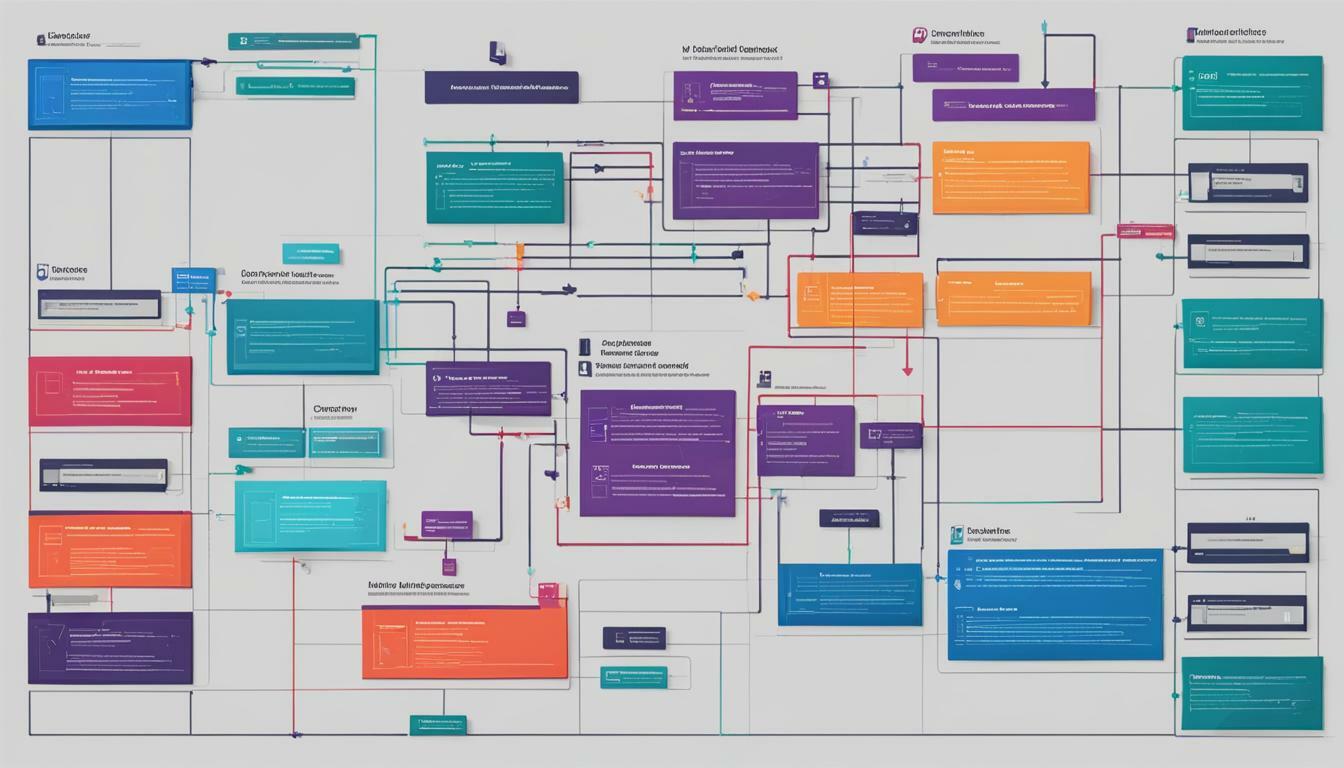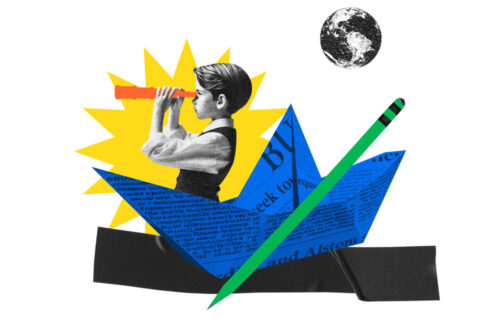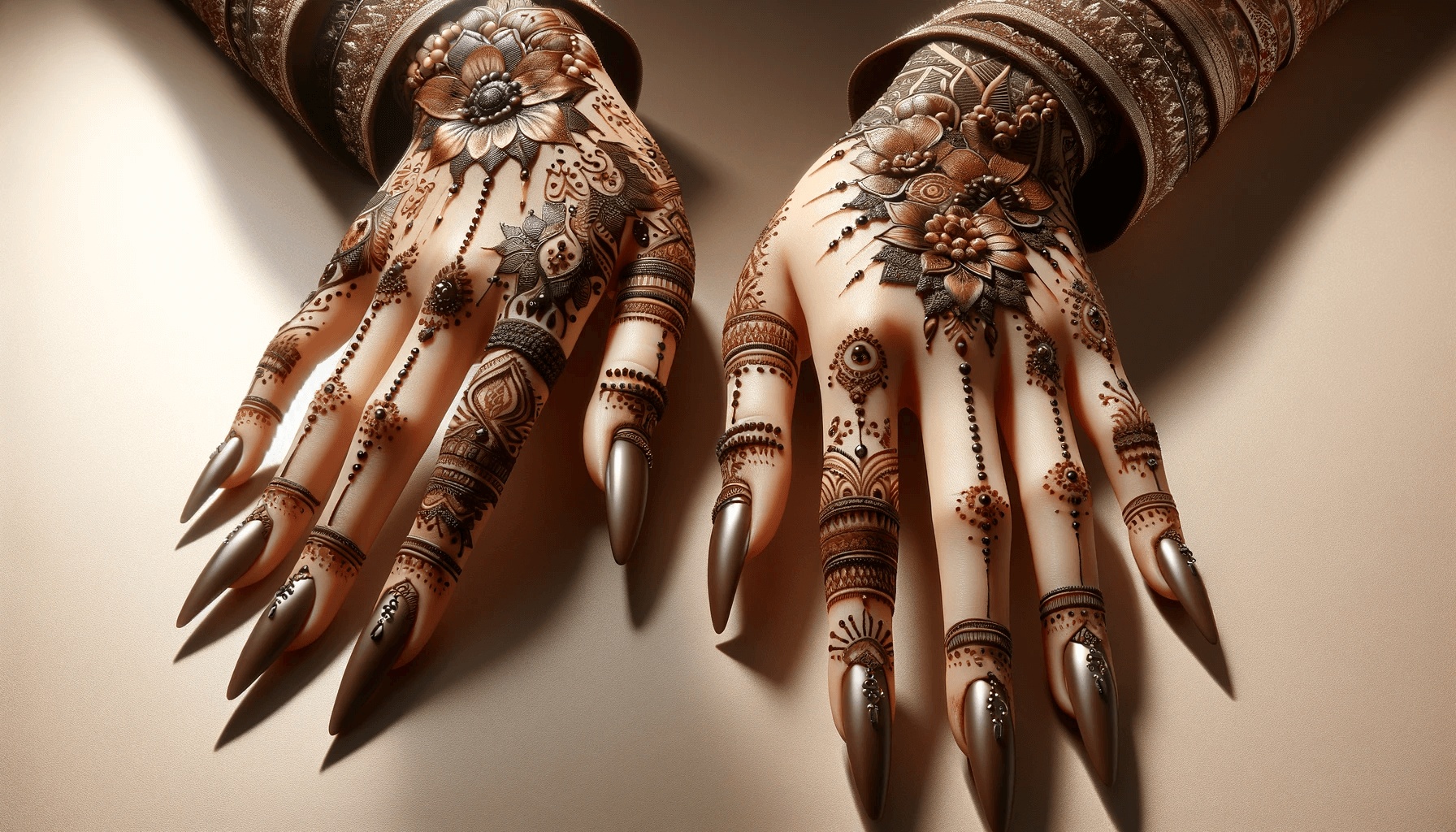Are you tired of creating websites that don’t quite hit the mark? Do you wish there was a more efficient way to plan out your designs and ensure a successful site? Introducing the website design flowchart – your blueprint for creating effective and user-friendly websites.
A website design flowchart is a visual representation of your site’s structure, flow, and content hierarchy. It outlines the different pages, sections, and elements of your site and helps you visualize how they all fit together. Think of it as a roadmap for your website – it guides you along the way and ensures you reach your destination.
In this article, we’ll explore the importance of a website design flowchart and break down its key components. We’ll also discuss how it can help in designing user-friendly navigation, visualizing your content strategy, promoting collaboration and communication, and provide tips and best practices for implementation.
Key Takeaways:
- A website design flowchart serves as a blueprint for creating successful sites
- It helps visualize the entire website structure and identifies potential design flaws or usability issues
- The main components of a website design flowchart include wireframes, sitemaps, navigation, and content organization
- It can facilitate the creation of user-friendly navigation and aid in visualizing the content strategy and information architecture of a website
- A website design flowchart promotes effective communication among designers, developers, and stakeholders, leading to a more efficient web design process
- Implementing a website design flowchart requires careful planning and attention to detail, but it pays off in the end with a successful website
Understanding the Importance of a Website Design Flowchart
Congratulations, you’ve decided to build a website! But before you go all-in with the design and development, let’s talk about something crucial – a website design flowchart. Now, you may be thinking, “Do I really need one?” The answer is, yes! And we’re about to tell you why.
Imagine building a house without a blueprint. Would you really trust your carpenter to wing it based on a vague description of what you want your dream home to look like? Of course not! So why would you leave the design of your website up to chance?
A website design flowchart is your blueprint for a successful website. It allows you to visualize the entire structure of your site, identify potential design flaws, and improve the user experience. Without it, you’re simply shooting in the dark and hoping for the best.
Not convinced yet? Let’s break it down further.
“A website design flowchart is your blueprint for a successful website.”
Having a website design flowchart is important for several reasons. Firstly, it helps you to clarify your ideas and organize your content. This is especially useful if you have a large website with multiple subpages and sections. The flowchart allows you to see the big picture and make sure everything fits together cohesively.
Secondly, a website design flowchart helps you to identify potential issues with your website’s usability and user experience. By visualizing the user journey, you can spot any potential roadblocks and make necessary changes before the website goes live.
Lastly, a website design flowchart promotes collaboration and is an essential tool for effective communication. It helps designers, developers, and stakeholders to be on the same page and work towards a shared goal, resulting in a smoother web design process.
So, there you have it – the importance of a website design flowchart. Trust us, taking the time to create one will save you time, money, and headaches in the long run.
Key Components of a Website Design Flowchart
Creating a successful website relies heavily on a well-executed design flowchart. But what exactly are the key components of a website design flowchart? Let’s take a closer look.
Wireframes: Before designing the website, it is crucial to have a plan in place, and wireframes allow you to do just that. A wireframe serves as a visual guide for the website structure, demonstrating how different elements will be placed on each page. It essentially acts as a blueprint for the final design.
Sitemaps: A sitemap is a hierarchical representation of all the pages on your website. It is used to organize the information architecture, and it helps identify gaps that might be present in your website’s content. Sitemaps allow you to see the website structure in its entirety, making it easier to ensure that all necessary pages are included.
Navigation: Navigation is crucial to the user experience of any website. Navigation flowcharts help you decide on the most appropriate types of navigation for your website. It’s important to consider what type of navigation is most effective for your particular website, and the design flowchart can help you visualize the different options.
Content Organization: Content is king, and a website design flowchart allows you to see how your content is organized and presented on each page. It helps you ensure that the right content is in the right place and that it is easy for visitors to find.
How These Components Work Together
The different components of a website design flowchart work together to ensure that your website is functional, visually appealing, and easy to use. Wireframes help you to decide on the layout of the website, while sitemaps organize the content and help ensure that everything is included. Navigation and content organization are visualized in the flowchart, allowing you to ensure that everything is placed in the right place. By considering all of these components in your website design flowchart, you can create a website that is effective and user-friendly.
Stay tuned for the next section, where we’ll explore how a website design flowchart can facilitate the creation of user-friendly navigation.
Designing User-Friendly Website Navigation with a Flowchart
Designing website navigation can feel like navigating a maze blindfolded. But fear not! A website design flowchart is here to guide you to the light at the end of the tunnel.
First things first, let’s talk about the importance of user-friendly navigation. If your visitors can’t find what they’re looking for, they may leave your site faster than a toupee in a hurricane.
So, how can a flowchart help? Well, designing with a flowchart allows you to visualize the navigation structure and make adjustments before any code is written. This saves time and prevents potential headaches down the line.
Menu Types
There are various types of navigation menus such as drop-down, hamburger, and mega menus. The choice of menu type depends on the complexity of your website and how many pages you have. A flowchart helps you to plan the menu structure and types in advance.
Menu Organization
The organization of your menus is critical for effective navigation. Group related pages together, and use clear and concise labels for each page. You don’t want your visitors scratching their heads wondering what “Widget A” is.
A flowchart helps you to create a logical organization structure. You can also identify any potential issues or dead-ends in the navigation flow before it’s too late.
Optimizing User Experience
Ultimately, your goal is to create an intuitive and seamless user experience. A website design flowchart helps you to plan the user journey in advance. You can map out the pages and content to create a logical order, leading visitors from one page to the next with ease.
By using a flowchart, you can optimize your website’s usability and create a navigation flow that would make even Odysseus proud.
Visualizing Content Strategy and Information Architecture in a Flowchart
Welcome to the section where we explore how a website design flowchart can help visualize your content strategy and information architecture. Think of it as a map that guides users through your website, making it clear where they can find what they’re looking for.
Using a flowchart helps you organize your website’s content and understand its hierarchy. You can see which pages are most important, how they connect to each other and where gaps may exist.
A well-designed website flowchart should include the following elements:
- Sitemap: This shows the pages on your website and how they link together. It gives users a high-level overview of your website.
- Wireframes: These are visual representations of each page on your website. They help you see how the content is laid out and how users navigate through it.
- Content: This includes all the text, images, and videos that will appear on your website. A website flowchart ensures that the content is organized and easy to find.
- Information Architecture: This refers to the structure, organization, and labeling of your website’s content. A website flowchart helps you understand your information architecture and how users will navigate your website.
When designing a website flowchart, it’s important to keep your users in mind. Think about their needs, goals, and expectations. What information do they need, and how can you present it to them in a logical and intuitive way?
Using a flowchart to map out your website’s content strategy and information architecture can make a big difference in the success of your website. It ensures that your website is user-friendly, easy to navigate, and presents information in a clear and logical way.
So, take some time to create a website flowchart. Your users will thank you for it!
Collaboration and Communication: Streamlining the Web Design Process
Listen up, champ! You already know that a website design flowchart is a crucial tool for creating a successful website. But what you might not know is that it also promotes effective collaboration and communication among your team.
With a website design flowchart, your designers, developers, and stakeholders can visually see the entire website structure, making it easier to communicate ideas and identify potential issues. Plus, the flowchart encourages collaboration by allowing everyone to contribute to the design process and make changes as needed.
“A website design flowchart is like a visual roadmap. It helps us all stay on the same path and reach our destination together.”
Effective communication is key in any web design project, and a flowchart makes it easier to keep everyone in the loop. With a clear understanding of the website structure and design goals, your team can work together more efficiently and effectively, saving time and avoiding costly mistakes.
So, don’t underestimate the power of collaboration and communication in the web design process. Use a website design flowchart to promote teamwork and streamline your project from start to finish. Your team—and your website—will thank you.
Implementing the Website Design Flowchart: Tips and Best Practices
Congratulations, you’re ready to implement your website design flowchart! Here are some tips and best practices to help ensure a successful and efficient web design process:
1. Start with a solid plan
Before diving into design, make sure you have a clear understanding of your website’s goals, target audience, and desired user experience. Use your flowchart as a guide to map out the website structure and content organization.
2. Involve all stakeholders
Collaboration and communication are key to a successful web design project. Make sure all stakeholders, including designers, developers, and clients, are involved in the planning and implementation process. Use your flowchart as a visual aid to facilitate discussion and make decisions.
3. Keep it flexible
Your flowchart is not set in stone. As the web design project progresses, you may need to make adjustments and modifications. That’s okay! Use your flowchart as a living document that can be adapted as needed.
4. Test, test, test
Once your website design is complete, make sure to thoroughly test it for usability and functionality. Use your flowchart to ensure that all pages are linked correctly and that the navigation is intuitive.
5. Stay organized
With a large website design project, it’s easy to get overwhelmed with the amount of information and tasks at hand. Use your flowchart as a reference point to keep yourself organized and on track.
Remember, a website design flowchart is a valuable tool for creating a successful and efficient web design process. By following these tips and best practices, you can maximize its benefits and create a website that meets your goals and exceeds your expectations. Happy designing!




